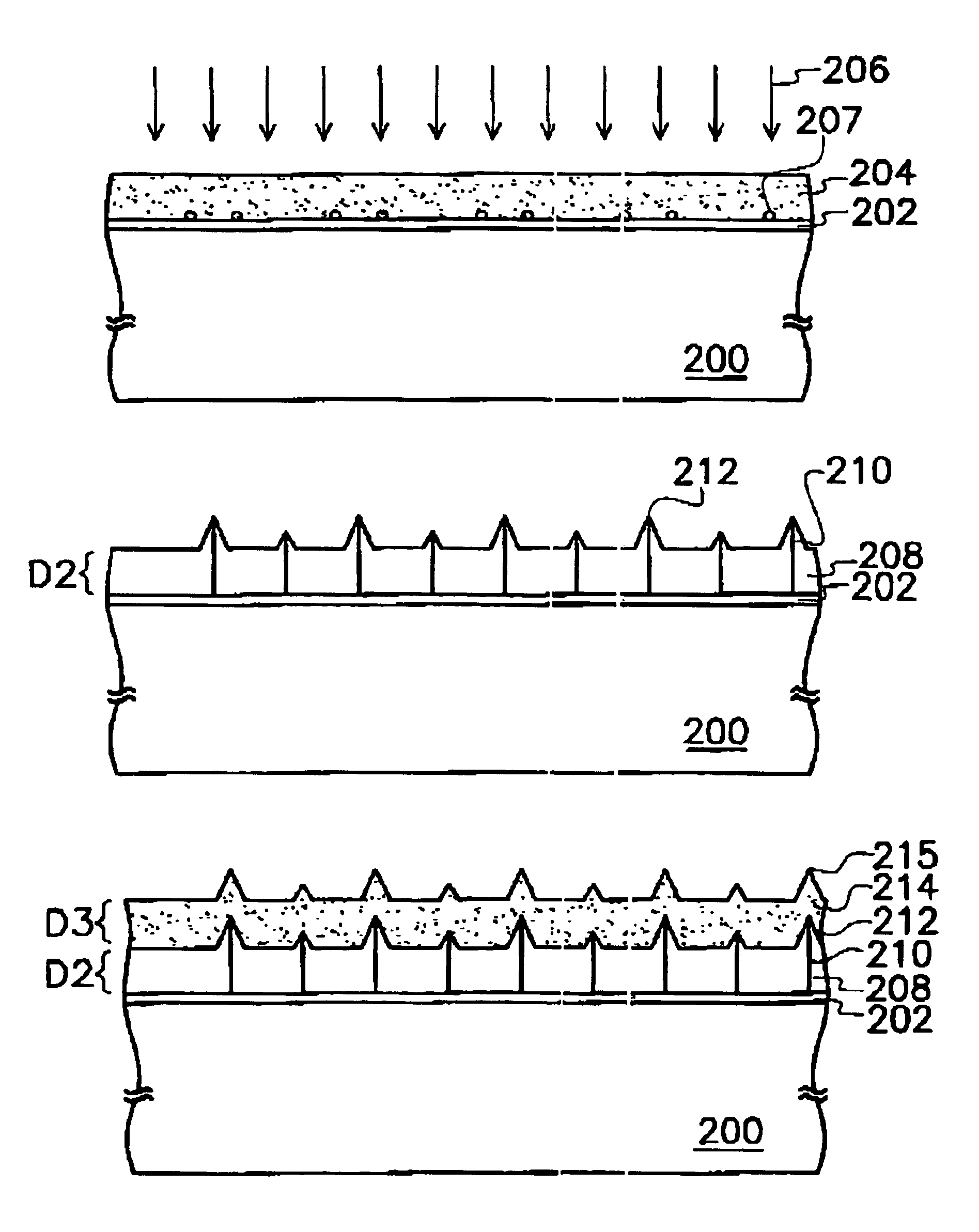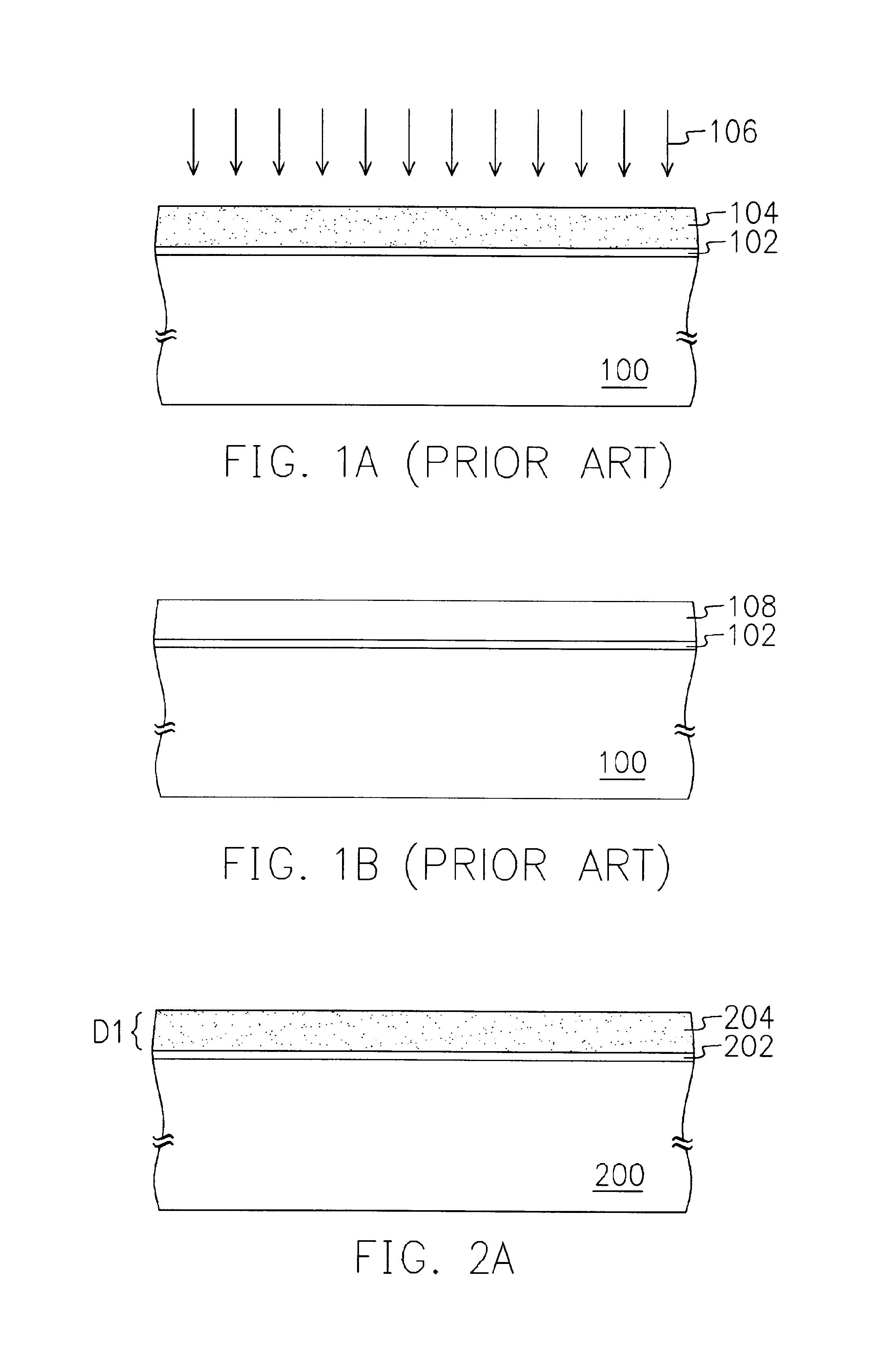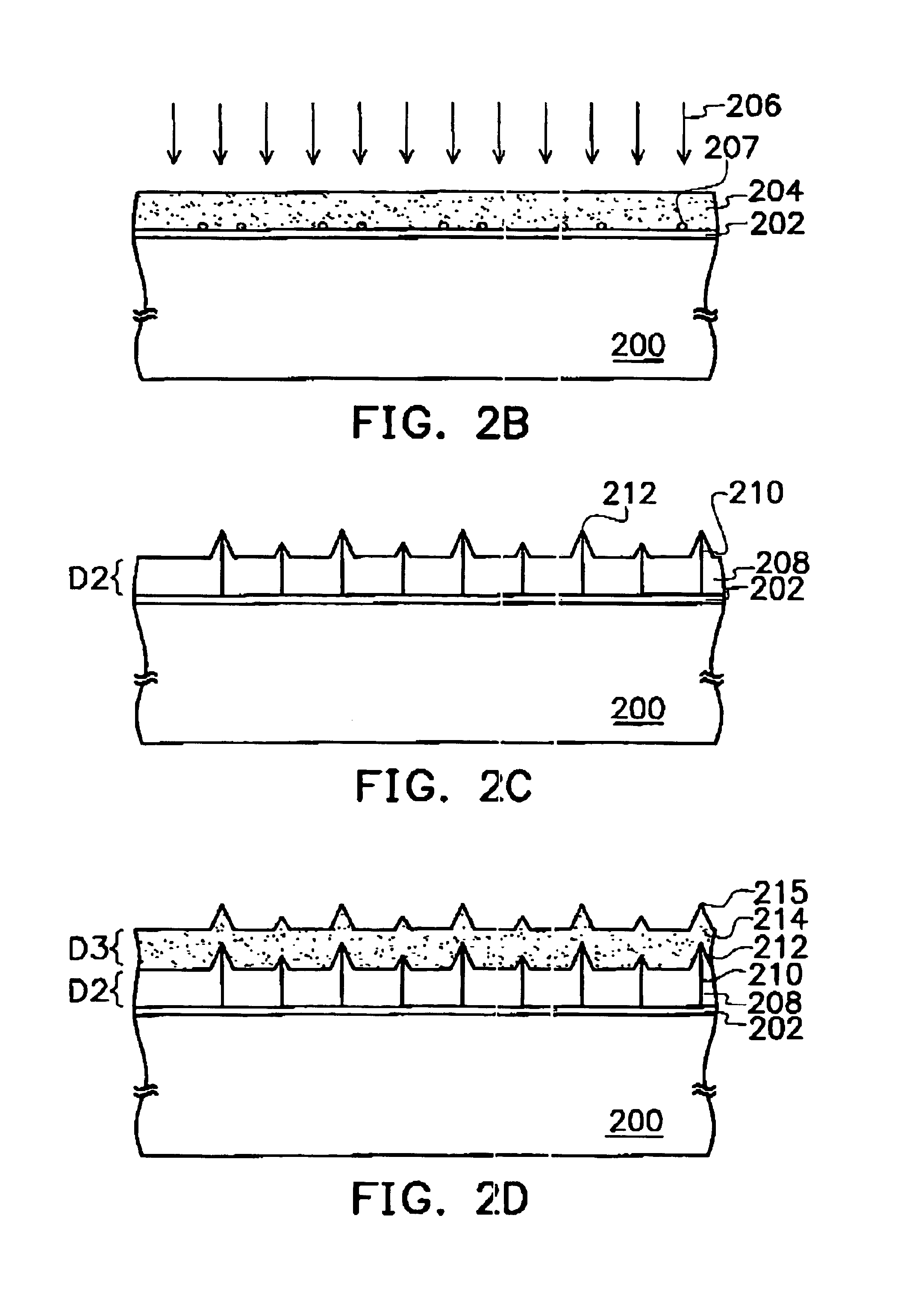Method of fabricating a polysilicon thin film
a thin film, polysilicon technology, applied in the direction of vacuum evaporation coating, chemical vapor deposition coating, coating, etc., can solve the problems of difficult control, adversely affecting the tft device, poor crystallization, etc., to reduce the amount and the density of protrusions and smooth the polysilicon thin film
- Summary
- Abstract
- Description
- Claims
- Application Information
AI Technical Summary
Benefits of technology
Problems solved by technology
Method used
Image
Examples
first embodiment
[0020]FIGS. 2A-2F are the cross-sectional views of the process of fabricating a polysilicon thin film in accordance with the present invention.
[0021]Referring to FIG. 2A, a substrate 200 is provided; the substrate 200 can be a silicon substrate, a glass substrate or a plastic substrate. Then an isolating layer 202 is formed on the substrate 200; the isolating layer material may include silicon dioxide. The isolating layer 202 can be formed by a low pressure chemical vapor deposition (“LPCVD”), a plasma enhanced chemical vapor deposition (“PECVD”) or a sputter. Next, an amorphous silicon layer 204 is formed on the isolating layer 202; the amorphous silicon layer 204 can be formed by a LPCVD, a PECVD or a sputter, wherein amorphous silicon layer 204 has a thickness of D1 approximately between 1 nm and 1000 nm.
[0022]Referring to FIG. 2B, a first annealing process 206 is performed, wherein the first annealing process 206 is performed by applying excimer laser to the amorphous silicon la...
second embodiment
[0029]FIGS. 3A-3G are the cross-sectional views of a process of fabricating a polysilicon thin film in accordance with the present invention.
[0030]Referring to FIG. 3A, a substrate 300 is provided; the substrate 300 can be a silicon substrate, a glass substrate or a plastic substrate. Then an isolating layer 302 is formed on the substrate 300; the isolating layer material can be silicon dioxide. The isolating layer 302 can be formed by using a LPCVD, a PECVD or a sputtering method. Later, an amorphous silicon layer 304 is formed on the isolating layer 302; the amorphous silicon layer 304 can be formed by using a LPCVD, a PECVD or a sputtering method, wherein amorphous silicon layer 304 has a thickness of D4; wherein D4 is approximately between 1 nm and 1000 nm.
[0031]Referring to FIG. 3B, a first annealing process 306 is performed, wherein the first annealing process 306 is performed by applying excimer laser to the amorphous silicon layer 304 to fuse most of the amorphous silicon la...
PUM
| Property | Measurement | Unit |
|---|---|---|
| thickness | aaaaa | aaaaa |
| thickness | aaaaa | aaaaa |
| temperature | aaaaa | aaaaa |
Abstract
Description
Claims
Application Information
 Login to View More
Login to View More - R&D
- Intellectual Property
- Life Sciences
- Materials
- Tech Scout
- Unparalleled Data Quality
- Higher Quality Content
- 60% Fewer Hallucinations
Browse by: Latest US Patents, China's latest patents, Technical Efficacy Thesaurus, Application Domain, Technology Topic, Popular Technical Reports.
© 2025 PatSnap. All rights reserved.Legal|Privacy policy|Modern Slavery Act Transparency Statement|Sitemap|About US| Contact US: help@patsnap.com



